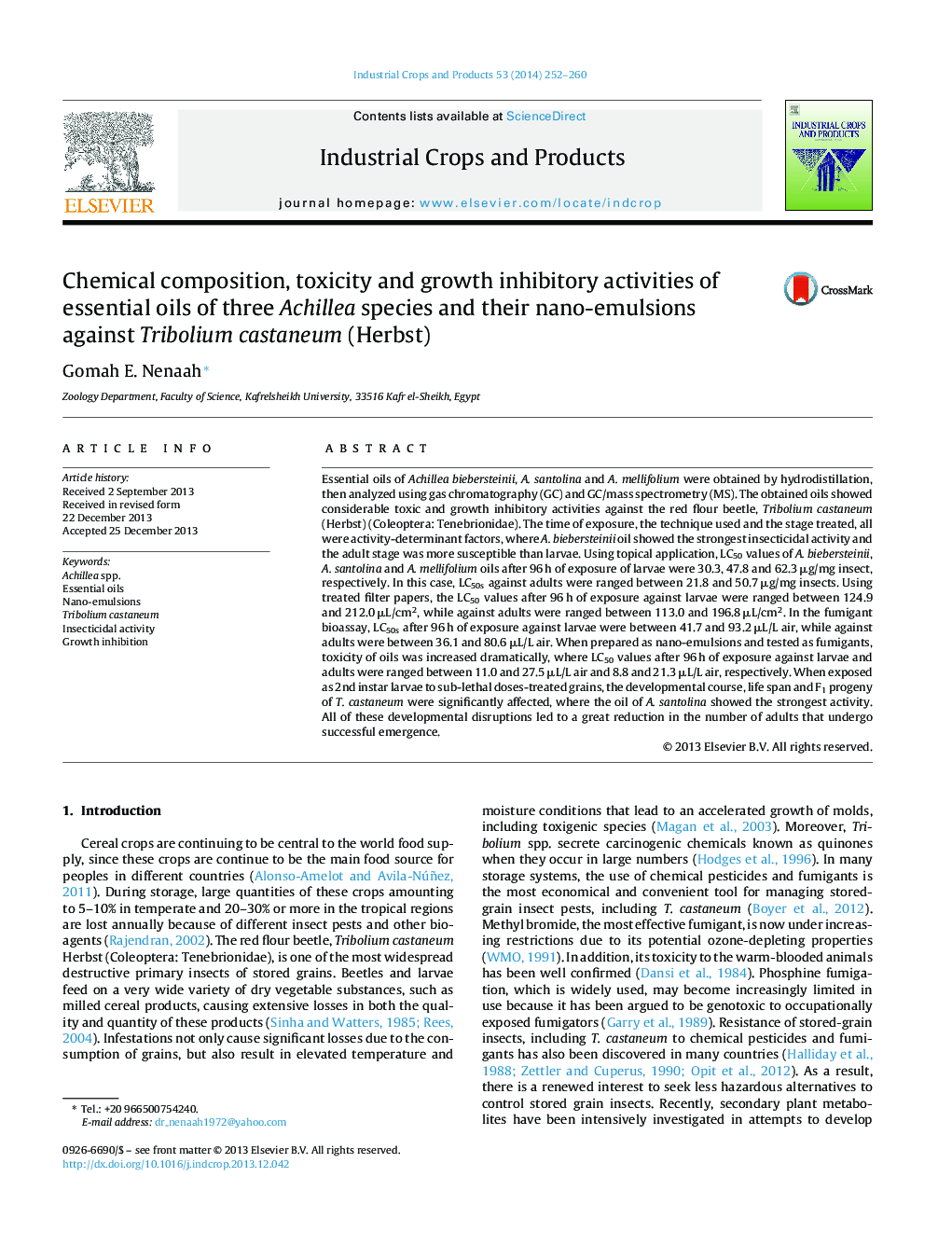| کد مقاله | کد نشریه | سال انتشار | مقاله انگلیسی | نسخه تمام متن |
|---|---|---|---|---|
| 4513516 | 1624856 | 2014 | 9 صفحه PDF | دانلود رایگان |

• Achillea biebersteinii, A. santolina and A. mellifolium essential oils were obtained.
• The oils were analyzed using gas chromatography (GC) and GC/mass spectrometry (MS).
• The oils showed toxicity and growth inhibitory activities against Tribolium castaneum.
• Nano-emulsions of the oils showed high fumigant toxicity against the test insect.
• The study recommends the potential use of Achillea oils as natural grain protectants.
Essential oils of Achillea biebersteinii, A. santolina and A. mellifolium were obtained by hydrodistillation, then analyzed using gas chromatography (GC) and GC/mass spectrometry (MS). The obtained oils showed considerable toxic and growth inhibitory activities against the red flour beetle, Tribolium castaneum (Herbst) (Coleoptera: Tenebrionidae). The time of exposure, the technique used and the stage treated, all were activity-determinant factors, where A. biebersteinii oil showed the strongest insecticidal activity and the adult stage was more susceptible than larvae. Using topical application, LC50 values of A. biebersteinii, A. santolina and A. mellifolium oils after 96 h of exposure of larvae were 30.3, 47.8 and 62.3 μg/mg insect, respectively. In this case, LC50s against adults were ranged between 21.8 and 50.7 μg/mg insects. Using treated filter papers, the LC50 values after 96 h of exposure against larvae were ranged between 124.9 and 212.0 μL/cm2, while against adults were ranged between 113.0 and 196.8 μL/cm2. In the fumigant bioassay, LC50s after 96 h of exposure against larvae were between 41.7 and 93.2 μL/L air, while against adults were between 36.1 and 80.6 μL/L air. When prepared as nano-emulsions and tested as fumigants, toxicity of oils was increased dramatically, where LC50 values after 96 h of exposure against larvae and adults were ranged between 11.0 and 27.5 μL/L air and 8.8 and 21.3 μL/L air, respectively. When exposed as 2nd instar larvae to sub-lethal doses-treated grains, the developmental course, life span and F1 progeny of T. castaneum were significantly affected, where the oil of A. santolina showed the strongest activity. All of these developmental disruptions led to a great reduction in the number of adults that undergo successful emergence.
Figure optionsDownload as PowerPoint slide
Journal: Industrial Crops and Products - Volume 53, February 2014, Pages 252–260